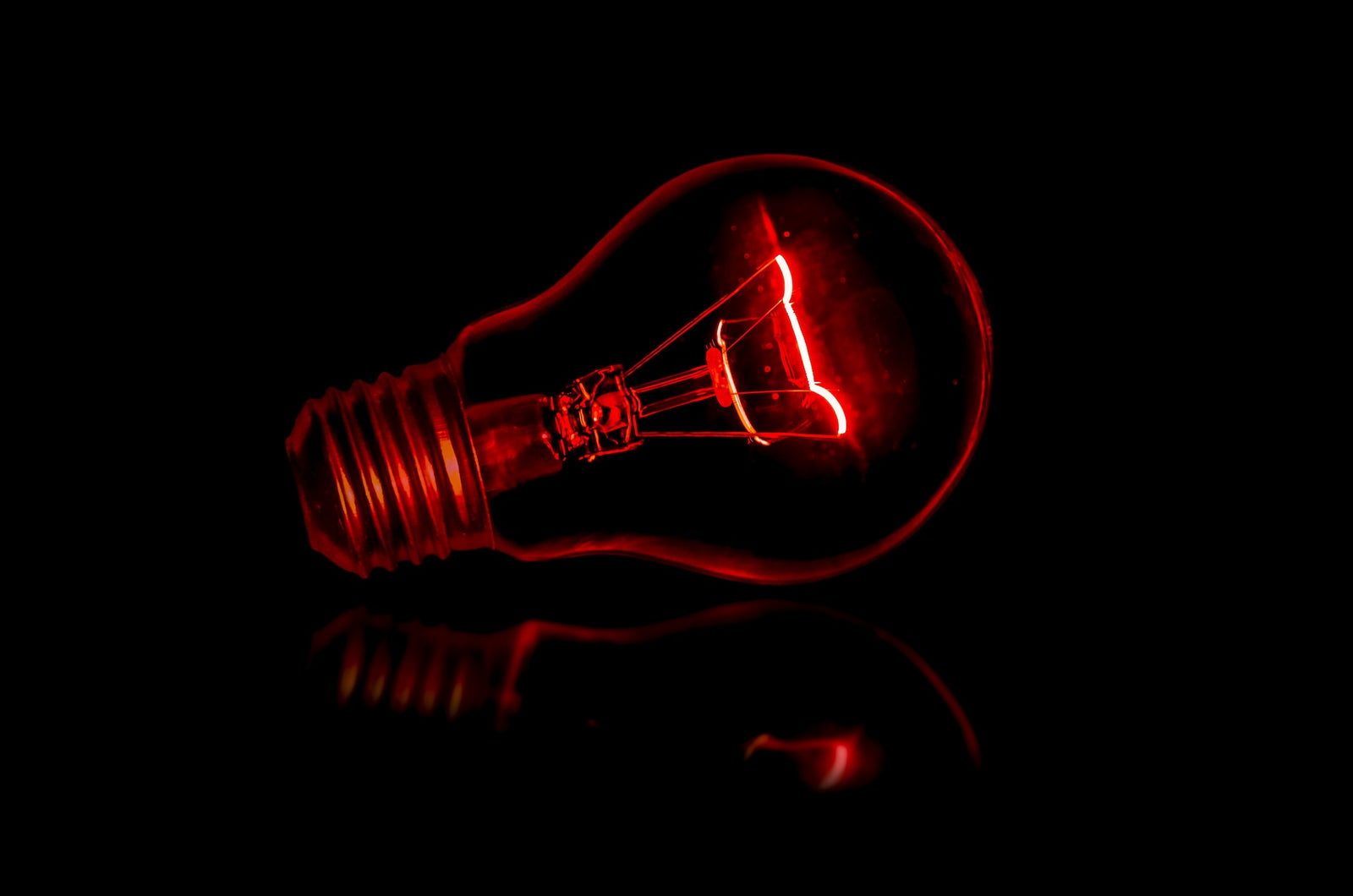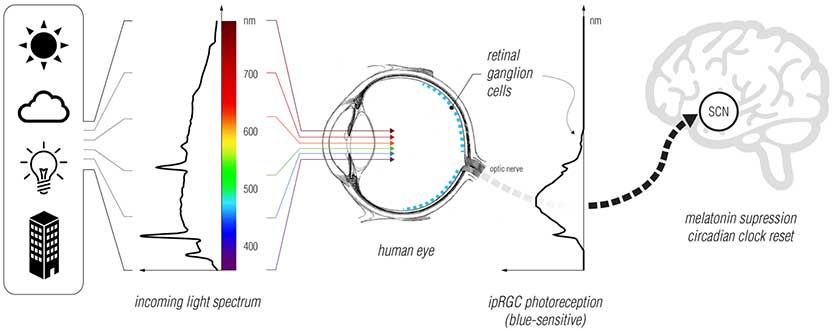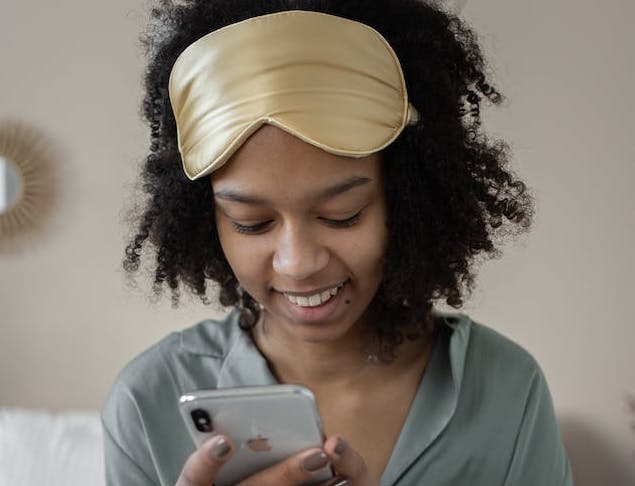Red light therapy, sometimes called RLT, has gained traction as a trendy biohacking tool.
First discovered in the 1960s, it’s been praised in recent years as a treatment option for skin issues, including wrinkles, scars, and wounds.
Many people own their own at-home red lights or visit red light therapy salons that administer the therapy in a manner similar to a traditional tanning bed.
Aside from enhancing the skin, red light therapy may also offer huge benefits for improving sleep quality due to its therapeutic effects.
So what is red light therapy, anyway? Is it truly the key to sweeter sleep and better skin, or just another gimmicky wellness trend?
What is Red Light Therapy?
Red light therapy was first discovered in the 1960s when scientific research with red lasers was found to promote hair growth and wound healing.
In the 1990s, red light was even used to help grow plants in space. Researchers found that red light helped promote the growth and photosynthesis of plants (all without the power of the sun).
This led to further research on red light as well as other light-emitting diodes (LEDS) of differing light wavelengths.
Findings concluded that yellow light may show promise when it comes to treating acne, rosacea, and alopecia.
Red light, on the other hand, increased collagen fibers within the skin while decreasing elastic fibers for the most impressive skin-boosting benefits across the board.
Since red lights offer the deepest tissue penetration when compared to other wavelengths of light, it appears to offer the most effective treatment for wound healing, skin damage, and skin lesions.

It’s even been used in medical settings to promote skin healing and even combat the side effects of chemotherapy.
Nowadays, many gyms, day spas, and even tanning salons offer red light therapy for cosmetic use. FDA-approved red light devices can also be found online.
We know that red light offers many healing benefits, but how does it affect our cells when we’re exposed to it?
The Science Behind Red Light
Science lesson alert!
Red light offers healing due to the biochemical effect in cells that it produces, strengthening our mitochondria.
You’ve likely heard that the mitochondria is the “powerhouse of the cell,” serving as the location where each cell creates energy.
Mitochondria create adenosine triphosphate, or ATP, which then carries energy found within our cells as a power source for most biochemical and physiological processes.
That means that growth, movement, and homeostasis all depend on ATP created in our mitochondria.
Red light increases the function of our mitochondria to help our cells produce even more ATP than usual. With more energy, cells can function at their highest efficiency for maximum repair.
Since red light doesn’t actually cause damage to the skin’s surface, it’s minimally invasive, convenient, and offers science-backed healing and tissue repair.
In fact, red light only penetrates 5 millimeters through the skin's surface.
However, the benefits don’t stop at skin healing.
Red light exposure and sleep cycles are closely linked, meaning that red light can help you get some much-needed shut-eye at the end of the day.
Light Exposure and Sleep
Light (and the absence of light) are well known to help determine our 24-hour internal clock, also called our circadian rhythm.
Our circadian rhythm determines how many hours of sleep we need each night, causing us to feel sleepy in the evening and alert in the morning.
The internal function of your circadian rhythm may change as you age. For example, teens may go to bed later and sleep longer, while those in old age tend to have earlier mornings and need fewer hours of sleep overall.
Your specific sleep chronotype may also influence this pattern – but your exposure to light has the largest influence on sleep/wake cues.
@somnifix Morning exposure sets the tone for sleep, while evening blue light exposure hinders it ☀️📱 #AndrewHuberman of #hubermanlab explains! #biohack #neuroscience #learntok ♬ Calm Down - Rema & Selena Gomez
Our internal clock is controlled by the pineal gland located within the center of the brain. One of its key roles is to produce melatonin, a hormone that causes the sensation of sleepiness.
This function is directly linked to light exposure obtained through the eyes.
During the day, sunlight filters through our photoreceptors within our retinas. These photoreceptors signal to the pineal gland to suppress the production of melatonin.
Once the sun goes down and there’s an absence of light, our eyes send signals to the pineal gland to begin secreting melatonin to prepare us for sleep.
That’s why viewing sunlight at the start of the day is so vital for “setting” our internal clock.
Moreover, the same process explains why avoiding blue light emitted by electronics is so vital for avoiding disruptions to our circadian rhythm.
Since red light is the opposite of blue light on the spectrum, it’s easy on the eyes (and encourages the onset of sleep).
Red Light Therapy: A Natural Sleep Aid
Blue light helps increase alertness, making it great for boosting awareness during the day, but harmful to our sleep quality at night.
Wavelengths from blue light prevent the brain from producing melatonin, making it harder to fall and stay asleep.
Aside from the sun, blue light waves are emitted from fluorescent lights, certain LED lights, televisions, cell phones, tablets, computer screens, and other electronic devices.
Red light wavelengths, on the other hand, have the opposite effect of blue light.
Have you ever felt soothed and relaxed while viewing an evening sunset? During sunset, the sun emits the highest amount of red and near-infrared light.

This signals to your body that it’s time to produce melatonin, wind down, and prepare for sleep. Red light therapy mimics the wavelengths of the sunset, all without the excess heat and damaging UV rays.
Red light therapy’s use as a sleep aid has even been proven in scientific research settings.
A 2012 study found that red light therapy improved sleep quality and melatonin levels in a group of female basketball players.
Each subject in the treatment group received 30 minutes of red light therapy for two weeks while the placebo group received no treatment.
Subjects from the treatment group experienced a huge increase in sleep quality and melatonin production, while those from the placebo group saw no change.
Furthermore, red light therapy may offer relief to those with depression and sleep disorders by promoting the onset of sleep, according to 2013 research.
Whether you choose to visit a red light therapy center or purchase your own red light for at-home use, the sleep quality, skin health, and overall wellness perks it offers are undeniable.
Just be sure your airways are functioning properly before you hit the hay. Regardless of your red light exposure levels, your sleep quality will suffer if you breathe improperly during sleep.
SomniFix + Red Light Therapy = Your Sweetest Sleep Yet
Red light helps promote the secretion of melatonin, leading to a faster onset of sleep and improved sleep quality.
Nasal breathing during sleep offers the same perks for better rest. When we nasal breathe, the sympathetic nervous system deactivates and, in turn, the parasympathetic nervous system takes over.
That means that nasal breathing places us in a state of “rest and digest,” while mouth breathing places us in a stressed state of “fight or flight.”
Moreover, the nose filters, warms, and humidifies the air we breathe for better oxygenation.
In contrast, mouth breathing obstructs the airway, causing sleep-disrupting snoring. Nasal breathing prevents airway obstruction, meaning no sleep fragmentation caused by snoring.
How do you make sure you’re nasal breathing rather than mouth breathing if you’re in dreamland? Mouth tape.

Mouth tape offers a comfortable lip seal that prevents mouth breathing, promotes nasal breathing, and stops snoring in its tracks.
Before you reach for any old tape, beware that most tapes contain irritating chemicals within their adhesives that cause skin rashes.
SomniFix is different.
Our strips are hypoallergenic, free from latex and gluten, and feature a patented central breathing vent to help keep you comfortable while getting used to the sensation of mouth taping.
As you incorporate red light therapy into your routine for sweeter sleep, add SomniFix to the mix for your most efficient sleep yet.






